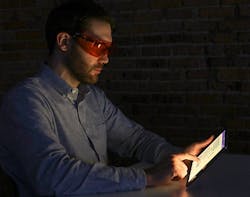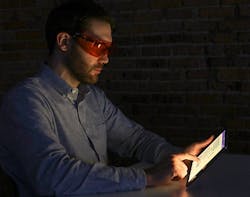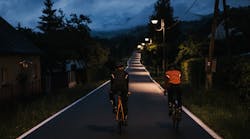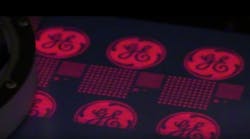A warm Apple iPad can be as guilty as a cold one at disrupting an important nighttime hormone, study shows. It’s the brightness that really counts.
In a small study bucking the theory that bedtime exposure to blue wavelengths in particular can disturb sleep, a well-known academic group has implicated the entire spectrum of light emitted by Apple iPads, and declared that Apple’s “Night Shift” lighting feature can be ineffective.
Interested in articles & announcements on LED display technology?
The Lighting Research Center (LRC) at Rensselaer Polytechnic Institute suggested that lowering screen brightness, rather than varying the color temperature, can reduce the chance for sleep disturbance.
Apple’s two-year old Night Shift software allows users to dial up warmer amber light at night, minimizing cooler blue wavelengths that many researchers, including LRC, have singled out for suppressing the release of melatonin, a hormone that signals nighttime’s arrival to the body’s circadian rhythm and is thus associated with sleep.
While LRC has not altered those findings, it reported this week that Night Shift users showed equal melatonin suppression when Night Shift was on a warm setting as when it was on cold. The Troy, NY-based group observed 12 young adults looking at iPads under different conditions between 11 p.m. and 1 a.m., and concluded that Night Shift made no difference per se.
An LRC researcher tests the orange goggles that filtered out blue light. The study showed 23% melatonin suppression with no Night Shift, 19% with Night Shift set at cold, and 12% with Night Shift at warm. LRC said all three percentages reflected “statistically significant” melatonin suppression. (Photo credit: Lighting Research Center at Rensselaer Polytechnic Institute.)
“The study’s main takeaway is that changing screen color alone is insufficient for limiting the impact of PEDs (personal electronic devices) on melatonin levels in the evening, and that screen brightness should also be reduced,” LRC noted.
LRC applied four different conditions over four nights. It reported “significant” melatonin suppression on three different nights, including the night when the young adults used their iPads on warm (2837K), as well as the night they switched on the cold (5997K) setting.
“There was no significant difference between the effectiveness of the two Night Shift settings,” LRC stated.
On another night, LRC administered a direct dose of villainous blue-tinged light to participants’ eyes via special goggles, thus assuring melatonin suppression.
The one night when melatonin flowed better was when participants used their iPads in dim light of less than 5 lx and wore orange goggles to filter out blue light.
LRC did not observe use of the cold blue light setting in dim conditions.
“The results of this LRC study may be useful for developers, manufacturers, and users of self-luminous electronic devices by emphasizing considerations other than light spectrum when designing and using display applications for health and wellbeing,” LRC said. “In addition to spectral properties, LRC researchers recommend that users also consider lowering the amount of light emitted by PEDs by keeping light levels low, limiting the use of PEDs to one-hour sessions, and avoiding exposures starting at least two hours before bedtime. Better yet, LRC researchers recommend turning off PEDs at least two hours prior to desired bedtimes. Even if melatonin is not suppressed during this interval, these devices can be alerting to the brain and, as a result, can disrupt sleep.”
LEDs Magazine requested a comment from Apple but had not heard back by the time this story posted. We will keep you updated.
If nothing else, the latest LRC study shows that the science of circadian lighting, also known as human-centric lighting, is still in its early days.
The LRC is one of many groups examining the effects of LED and other light on human wellbeing. It has found that blue frequencies in the office during the morning can help induce better sleep and lower levels of stress and depression.
Blue stimulates the retina’s non-visual receptors — known as ipRGCs (for intrinsically photosensitive retinal ganglion cells) — which release a pigment called melanopsin that stirs up the body’s master clock in the brain.
The tunability of LED light sources lends them to operations that can support the physiological needs of people at home and work.
The study of light’s effect on the body clock is part of the broader interest in circadian science, for which three scientists this year won the Nobel Prize in Physiology or Medicine.
MARK HALPERis a contributing editor for LEDs Magazine, and an energy, technology, and business journalist ([email protected]).
*Updated Feb. 6, 2018 2:58pm for caption clarification.






